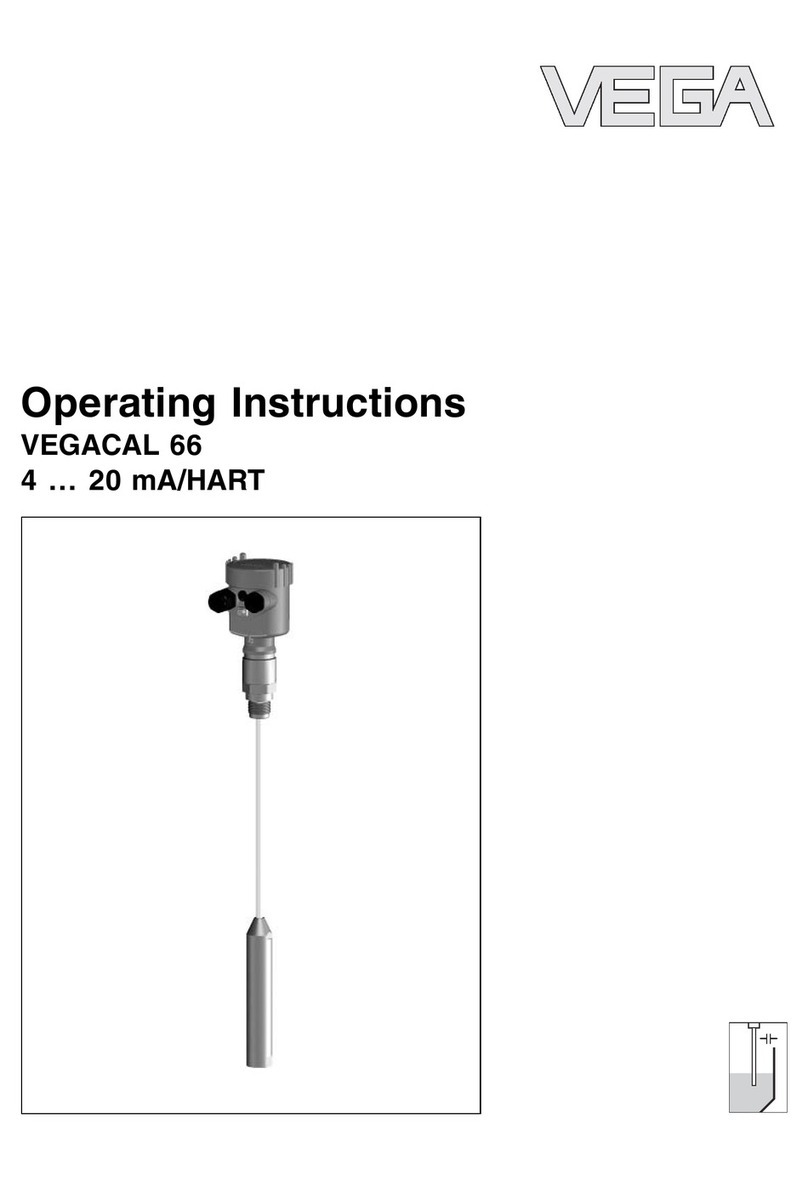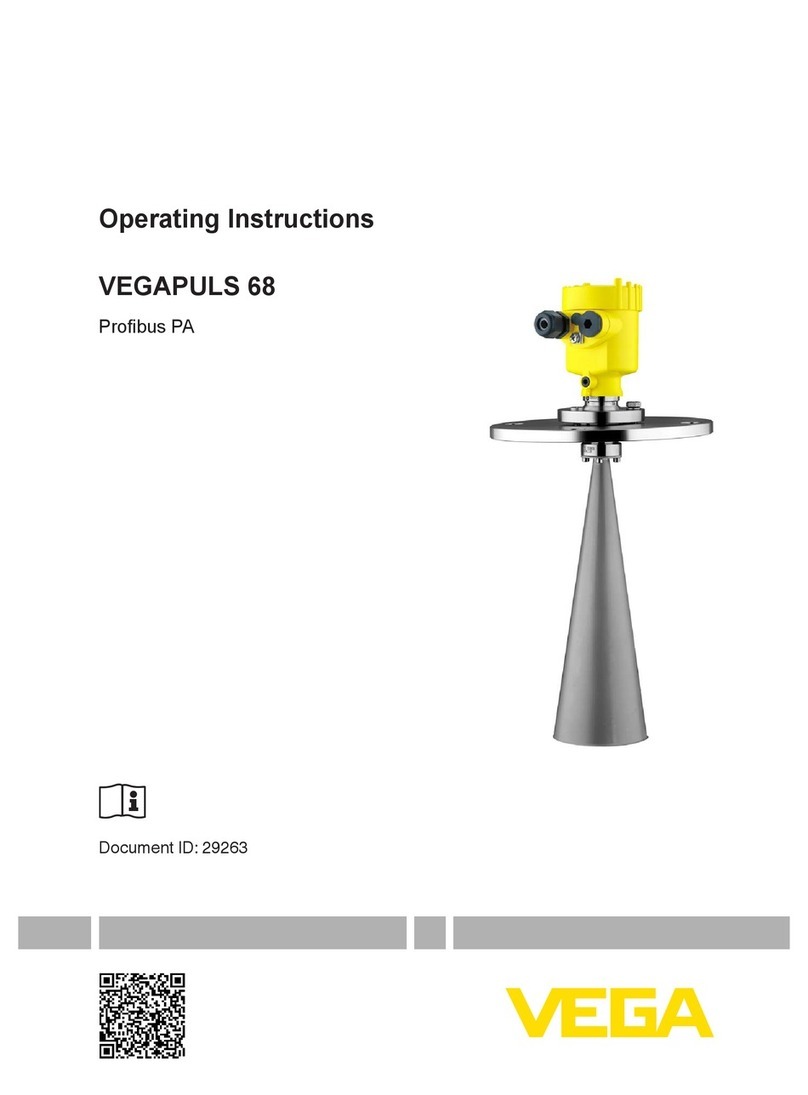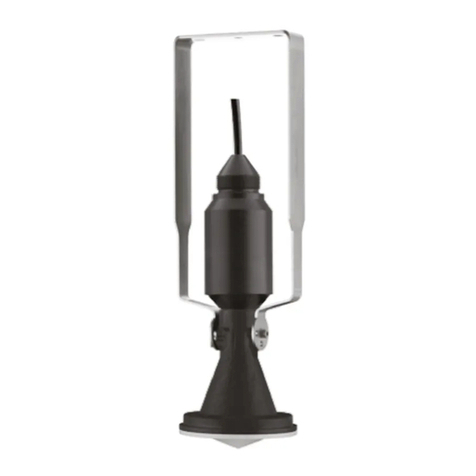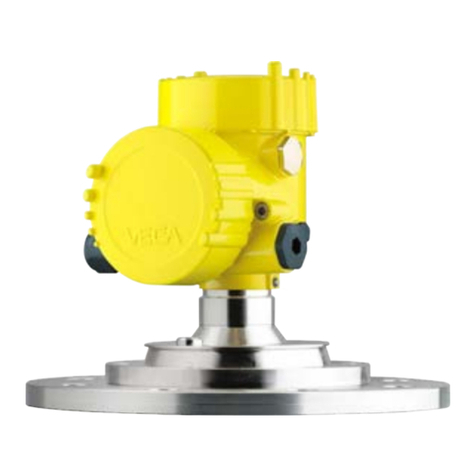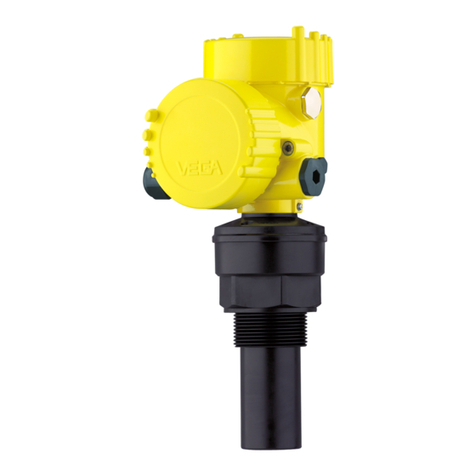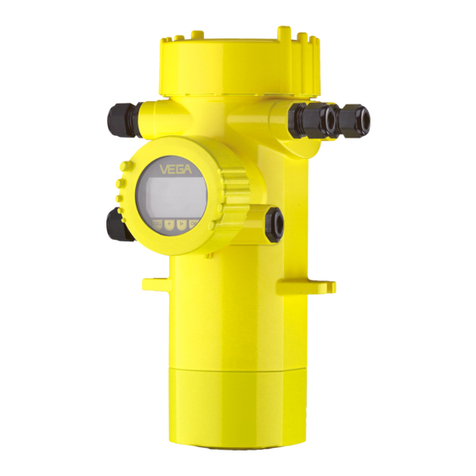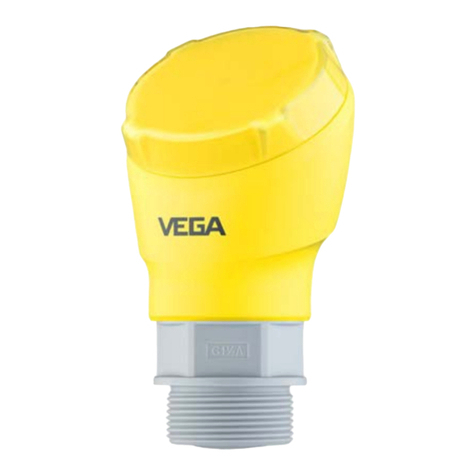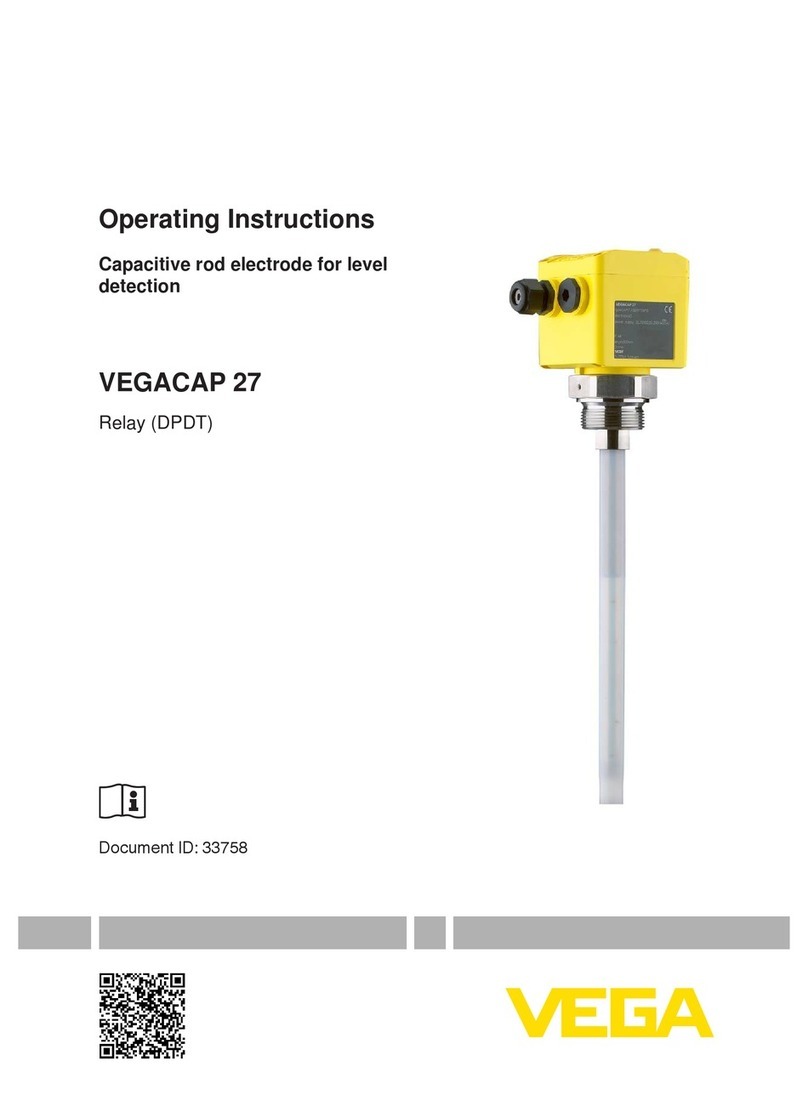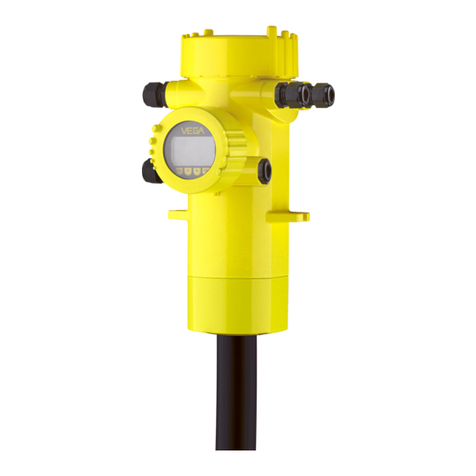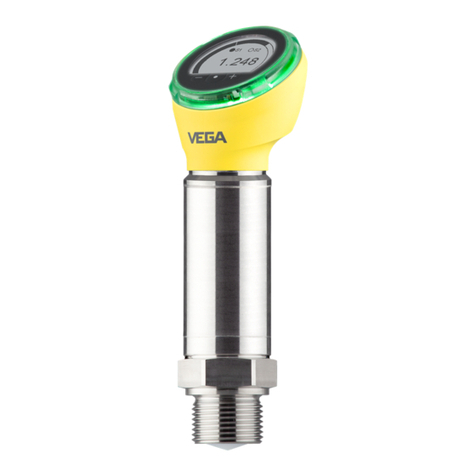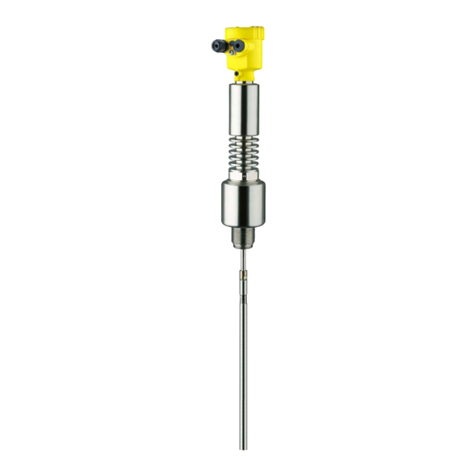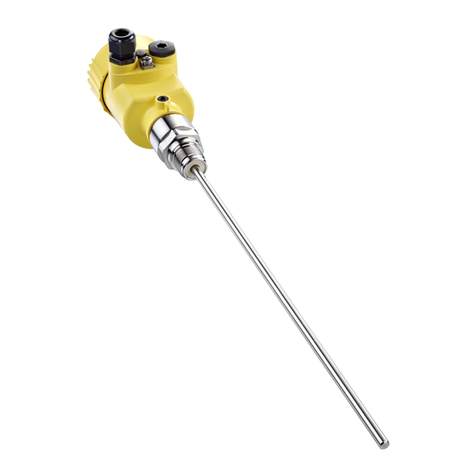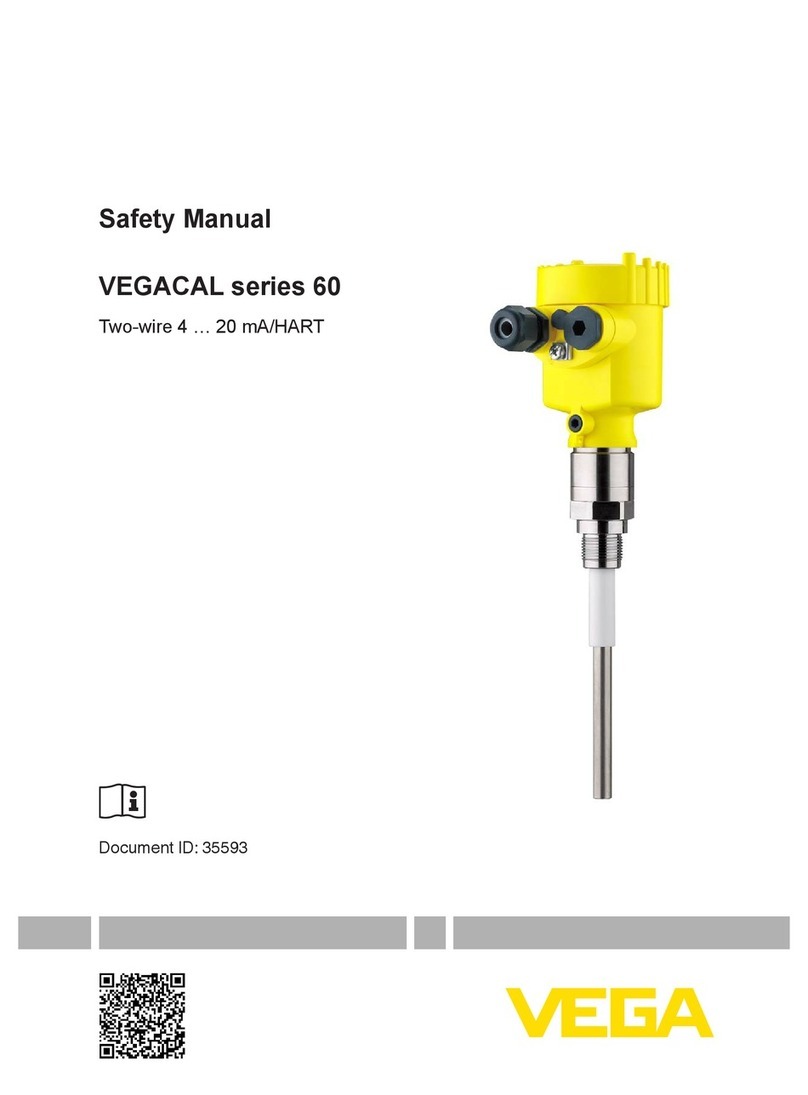2.6Safety information for Ex areas
Please note the Ex-specific safety information for installation
and operation in Ex areas.These safety instructions are part of
the operating instructions manual and come with the Ex-
approved instruments.
2.7Manufacturer declaration
In conformity with DIN EN 60079-14/2004,para.5.2.3,point
c1,the capacitive probe VEGACAP 63 is suitable for use in
zone 2.
The operator must use the instrument correctly and follow the
specifications of the following documents:
lthis operating instructions manual
lthis manufacturer declaration (24644)
lthe applicable installation regulations
Max.increase of the surface temperature during operation:
40 K(individual components in the instrument)
With an ambient temperature of +70°C(+158°F)on the
housing and a process temperature of +70°C(+158°F), the
max.ambient temperature during operation is +110°C
(+230°F).
Measures for maintaining explosion protection during oper-
ation:
lOperate the instrument in the range of the specified
electrical limit values.Permissible supply voltage:see
"Technical data"
lMount and operate the instrument in such a way that no
ignition danger is expected by electrostatic charges.The
process fitting,the plastic-coated/covered probe part or the
housing are made of electrically non-conductive plastic
(depending on the version).
lMake sure that the seal is mounted correctly between
lower part of the housing and cover.Screw the cover on
tightly.
lMake sure that there is no explosive atmosphere,if you
want to operate the instrument with open cover
lMake sure that the cable gland is tight and strain-relieved.
The outer diameter of the connection cable must be
adapted to the cable gland.Tighten the pressure screw of
the cable gland carefully.
lCover unused openings for cable glands tightly
6VEGACAP 63 -with transistor output
For your safety
30010-EN-060222

